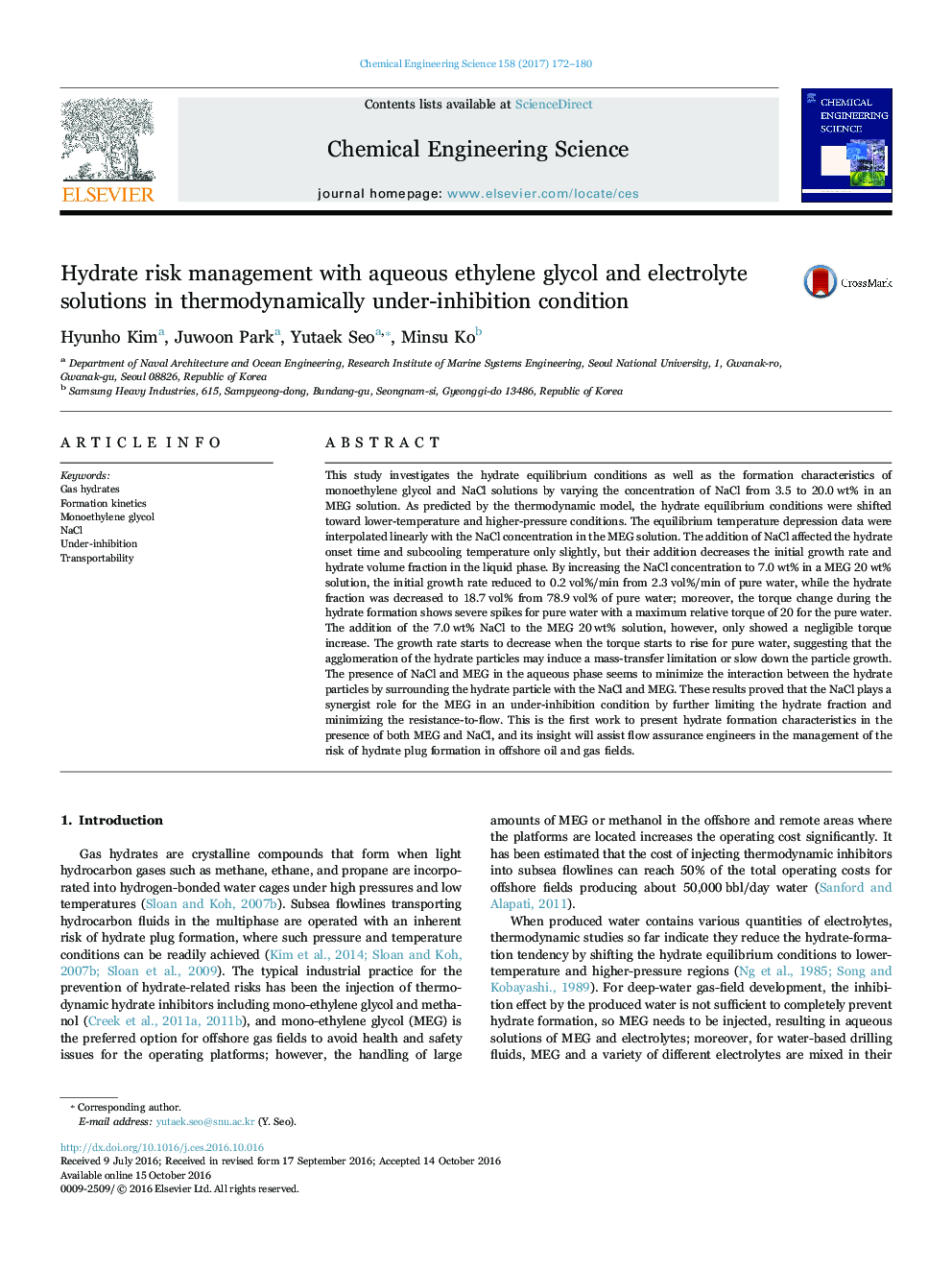| کد مقاله | کد نشریه | سال انتشار | مقاله انگلیسی | نسخه تمام متن |
|---|---|---|---|---|
| 6467950 | 1423261 | 2017 | 9 صفحه PDF | دانلود رایگان |
- This work includes the effect of NaCl and MEG on hydrate formation characteristics.
- The equilibrium temperatures shifted to lower temperature region by adding NaCl.
- The initial growth rate decreases 4.5 times by increasing NaCl concentration
- NaCl is a synergist decreasing the growth rate and reducing the hydrate fraction.
This study investigates the hydrate equilibrium conditions as well as the formation characteristics of monoethylene glycol and NaCl solutions by varying the concentration of NaCl from 3.5 to 20.0Â wt% in an MEG solution. As predicted by the thermodynamic model, the hydrate equilibrium conditions were shifted toward lower-temperature and higher-pressure conditions. The equilibrium temperature depression data were interpolated linearly with the NaCl concentration in the MEG solution. The addition of NaCl affected the hydrate onset time and subcooling temperature only slightly, but their addition decreases the initial growth rate and hydrate volume fraction in the liquid phase. By increasing the NaCl concentration to 7.0Â wt% in a MEG 20Â wt% solution, the initial growth rate reduced to 0.2Â vol%/min from 2.3Â vol%/min of pure water, while the hydrate fraction was decreased to 18.7Â vol% from 78.9Â vol% of pure water; moreover, the torque change during the hydrate formation shows severe spikes for pure water with a maximum relative torque of 20 for the pure water. The addition of the 7.0Â wt% NaCl to the MEG 20Â wt% solution, however, only showed a negligible torque increase. The growth rate starts to decrease when the torque starts to rise for pure water, suggesting that the agglomeration of the hydrate particles may induce a mass-transfer limitation or slow down the particle growth. The presence of NaCl and MEG in the aqueous phase seems to minimize the interaction between the hydrate particles by surrounding the hydrate particle with the NaCl and MEG. These results proved that the NaCl plays a synergist role for the MEG in an under-inhibition condition by further limiting the hydrate fraction and minimizing the resistance-to-flow. This is the first work to present hydrate formation characteristics in the presence of both MEG and NaCl, and its insight will assist flow assurance engineers in the management of the risk of hydrate plug formation in offshore oil and gas fields.
Journal: Chemical Engineering Science - Volume 158, 2 February 2017, Pages 172-180
